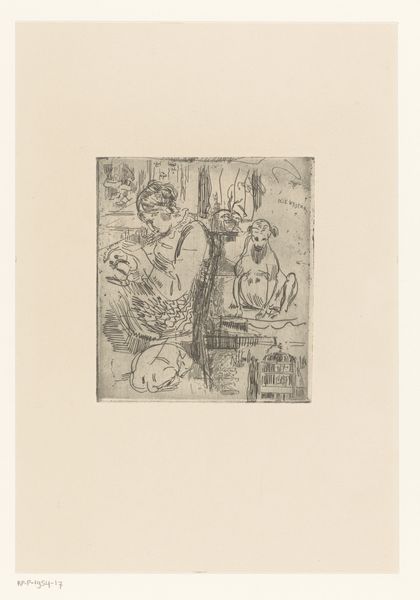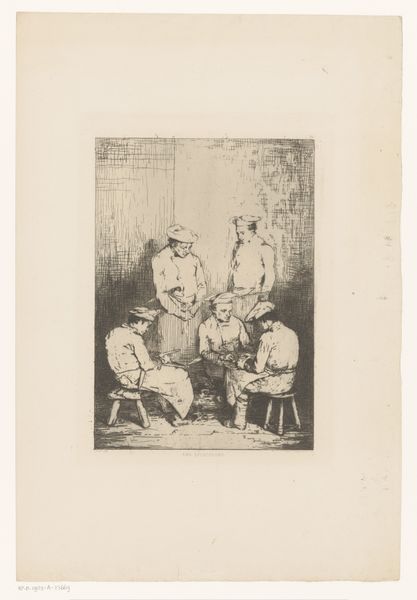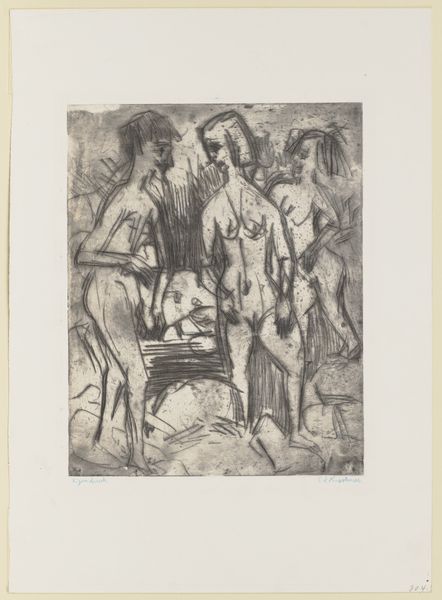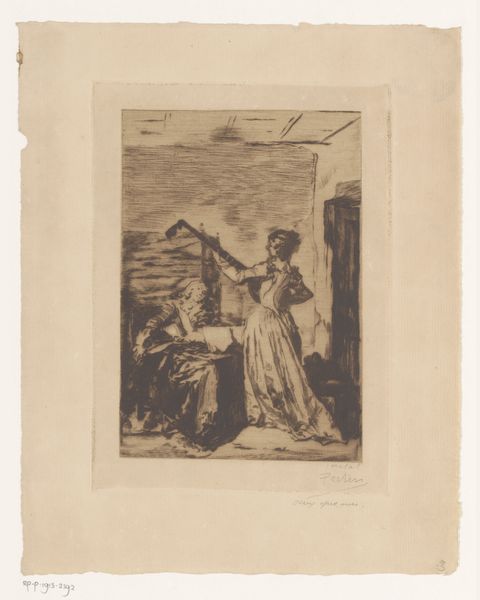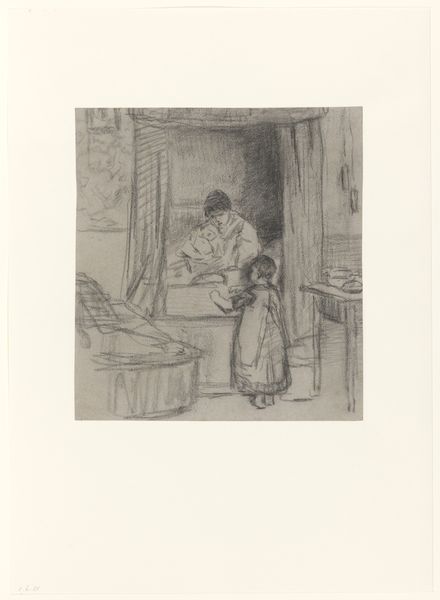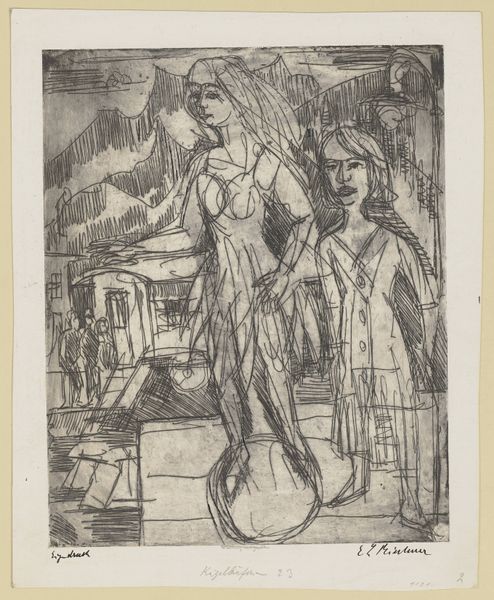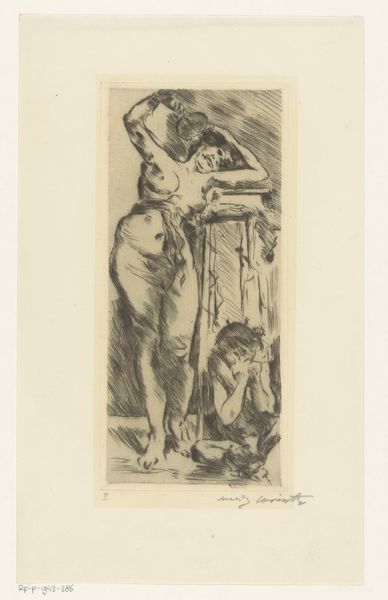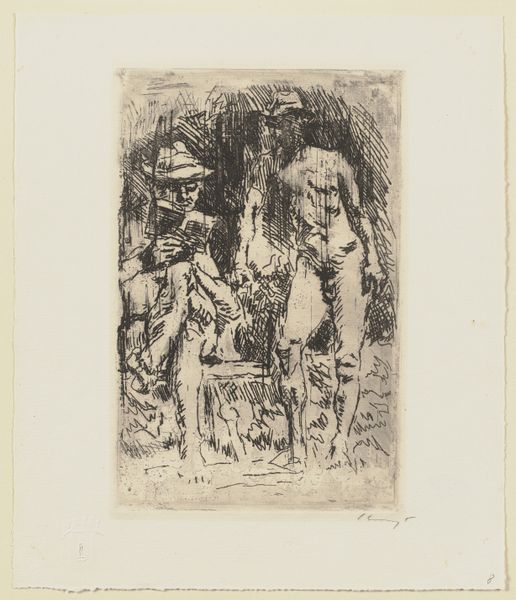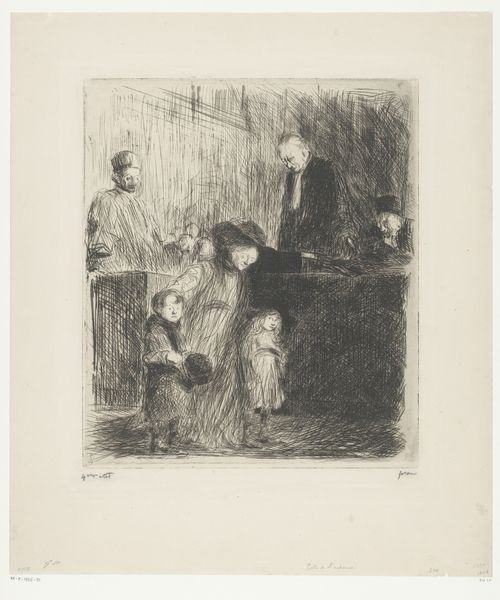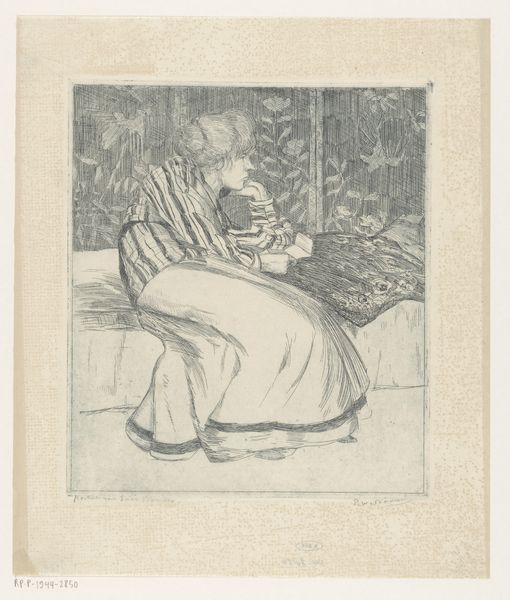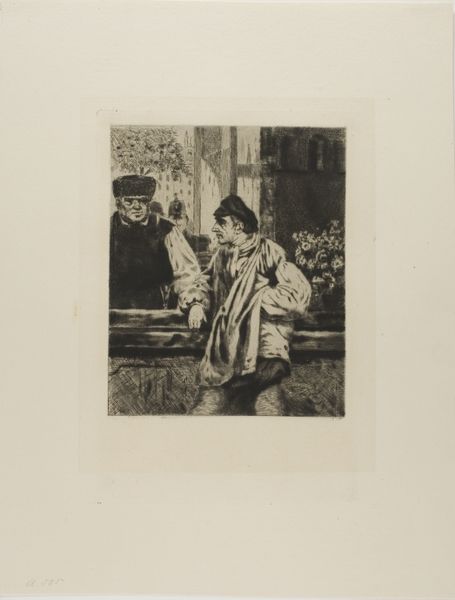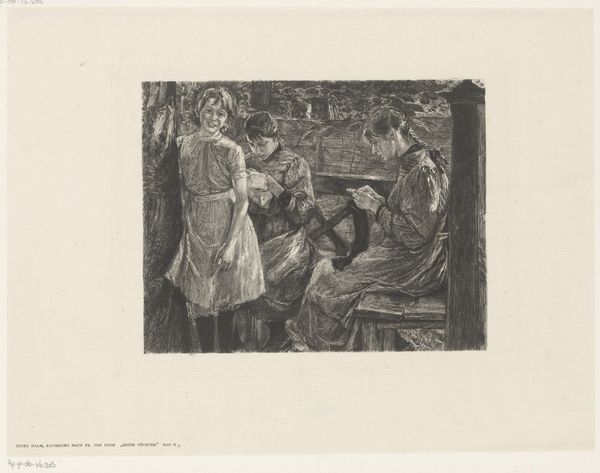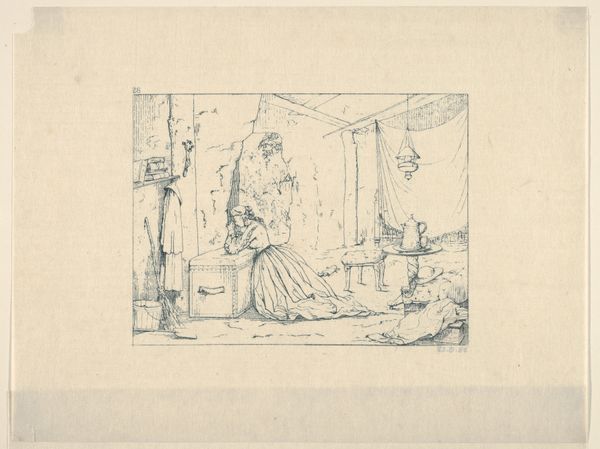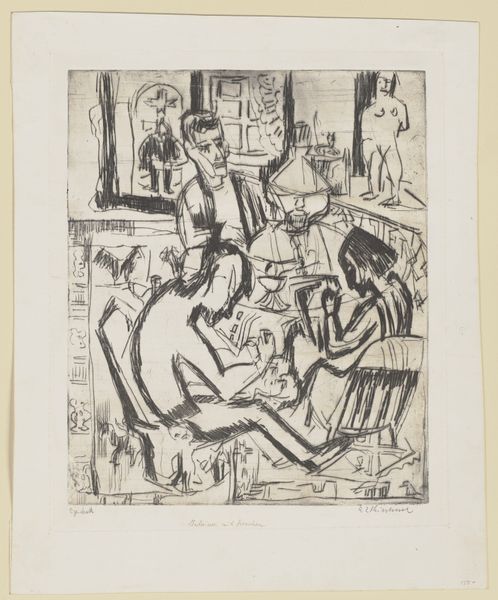
drawing, ink, pen
#
portrait
#
drawing
#
allegory
#
pen illustration
#
old engraving style
#
figuration
#
ink
#
ink drawing experimentation
#
pen-ink sketch
#
pen work
#
symbolism
#
sketchbook drawing
#
pen
#
history-painting
Dimensions: height 399 mm, width 286 mm
Copyright: Rijks Museum: Open Domain
Curator: What a compelling image! This drawing by Pierre-Emile Cornillier from 1899, titled "Kolone Georges Picquart achter een bureau," depicts Colonel Picquart behind a desk. It's rendered in pen and ink. Editor: My first thought is the stark contrast. It feels heavy, burdened. The inkwork gives it an almost oppressive quality, especially with that prison window in the background. Curator: Absolutely. Cornillier clearly used the medium to create a strong sense of atmosphere. But it is important to consider Picquart’s position at the time; wrongfully accused, and imprisoned for standing up to what he thought was the mis-justification of Alfred Dreyfus. Cornillier subtly embeds the political turmoil of the Dreyfus Affair. Justice and Truth hover above Picquart seemingly encouraging him. The choice of pen and ink, accessible materials, underscores Picquart’s relative powerlessness against institutional forces. Editor: That connection to accessible materials is insightful. The drawing then speaks to how even marginalized groups used symbolism and art to disseminate ideas when censored through other mediums. The artist then depicts not necessarily Picquart's real lived-in conditions, but an imagined one. Curator: Precisely! Think about the paper it’s drawn on, too. Its archival nature lends a documentary feel, a historical record being created even as we observe it. The symbolic choice is powerful, amplifying the truth's eventual victory. The artist makes evident through his choice of ink and paper his hopes that Justice and Truth do come out of it. Editor: And in that line, the material choices and process have social implications, then, in how the narrative is constructed around him, and the politics of representation itself. It's fascinating how the immediacy of a sketch can carry such weight. Curator: Indeed. It transcends a simple portrait. It speaks volumes about justice, truth, and the power, or perceived lack of power, of the individual against societal machinery, thanks to both Cornillier’s choices and how we understand them. Editor: Reflecting on this now, examining the historical forces embodied by Picquart adds such layers. And I didn't consider initially how the choices in media were also deliberate considerations on the artist's behalf, especially in the light of those societal constraints.
Comments
No comments
Be the first to comment and join the conversation on the ultimate creative platform.
